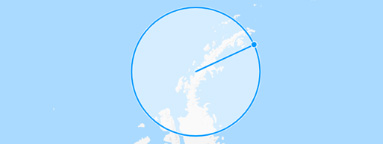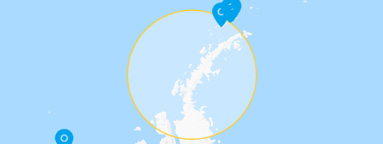
Scientific observations and results from Antarctica shallbe exchanged and made freely available
This dataset provides a CFRAM-based decomposition of energy budget components associated with wintertime warm events over the Arctic and the Korean Peninsula, simulated using the KPOPS atmospheric model. The data quantify the contributions of water vapor, cloud processes, surface albedo, shortwave and longwave radiation, turbulent heat fluxes, and dynamical and physical atmospheric processes to surface temperature anomalie during the period of 2000.11-2022.2. Three winter experiments are included to isolate the roles of sea surface temperature forcing and Arctic thermodynamic processes: 1. Winter: The baseline KPOPS experiment forced with forecast sea surface temperatures from the Climate Forecast System (CFS) as boundary conditions. 2. Winter_oisst: An experiment in which sea surface temperatures are prescribed from the NOAA Optimum Interpolation Sea Surface Temperature (OISST) reanalysis dataset. 3. Winter_fd: A freeze-dry experiment in which thermodynamic processes over the Arctic are suppressed to isolate the role of Arctic moisture and thermodynamic feedbacks. This dataset enables inter-regional and inter-experimental comparisons of winter warming mechanisms between high-latitude and mid-latitude regions and supports process-oriented evaluation of model-simulated warm events.
Monthly Antarctic sea ice volume south of 60S (1992–2018) from CICE5 forcing sensitivity experiments
Monthly Antarctic sea ice extent south of 60S (1992–2018) from CICE5 forcing sensitivity experiments
This dataset presents a new catalogue of active subglacial lakes beneath Thwaites Glacier, West Antarctica, identified using CryoSat-2 satellite radar altimetry. It details the boundaries, areas, and elevation changes of each lake, complete with 95% confidence intervals. The dataset also contains estimates of ice speed changes in the TG's grounding zone. For citation purposes, refer to the article by B-H Kim, C-K Lee*, K-W Seo, W S Lee, and J-W Park, 'New Catalogue of Thwaites Glacier Subglacial Lakes and Their Activity Revealed by CryoSat-2 Altimetry,' currently under revision for the Journal of Geophysical Research: Earth Surface. For more information, Dr. Choon-Ki Lee can be contacted at cklee@kopri.re.kr.
This dataset consists of high-precision GNSS observation data collected from January to May 2025 at King Sejong Station, King George Island, Antarctica. The data can be used for monitoring crustal movements, surface stability, and glacial displacement in polar geophysical research.
Horizontal neutral wind around 87km, 97km, 250km measured from FPI instrument at JBS station, Antarctica. Study of the atmospheric wave activities in MLT and thermosphere regions over the southern high-latitude.
King Sejong Station more infomation
Barton Peninsula, King George Island, AntarcticaJang Bogo Station more infomation
Terra Nova Bay, Northern Victoria Land, AntarcticaDasan Station more infomation
NyÅlesund, Norway, Europelast 5 years data
Since 2010
last 5 years data
Select a Circle or Square

Click the play button

On the map, click Set Area Center

Drag to adjust

Click again to quit

Click the search button and you will only be able to search results within the area.

* Click the Stop button to cancel
